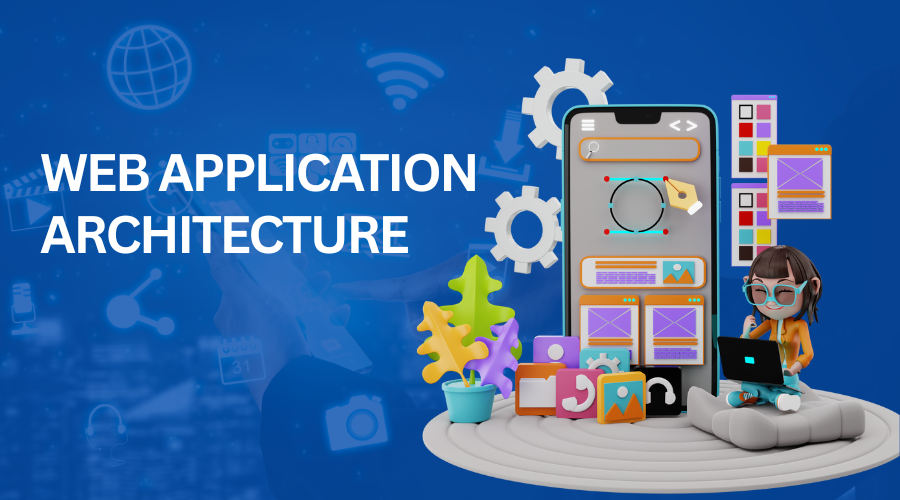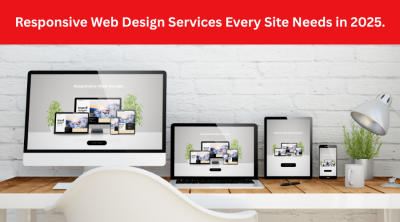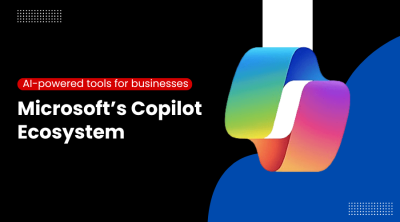Web Application Architecture: What’s That & Why Should You Care?

Let’s play a game.
You open a website. It takes forever to load. You click something, and nothing happens. Frustrating, right?
You, yourself, won’t stay on a slow, clunky website for more than 5 minutes—so why will your audience, when they’ve got a million other tabs screaming for attention?
Here’s the real culprit: the web application’s architecture.
Yep, the blueprint behind how that site is built and how everything works together (or doesn’t).
So, if you're building a web app, planning to scale one, or simply want to sound smarter in your next meeting, let’s break it down quickly and painlessly.
What Is Web Application Architecture?
Imagine your favorite food delivery app. You open it, choose a meal, place an order, and wait for that steaming hot food to reach your door.
What just happened in the background?
That entire smooth flow, between what you see and what happens behind the scenes, is made possible by web application architecture.
In simple words, it is the skeleton of a web app. It gives your web app a structure and helps it stand on its own. Web application architecture is basically how the front-end (what users interact with), back-end (what processes data behind the curtain), and the database (where info is stored) work together.
It decides how fast your app responds and how secure it is. It makes all the difference between your user’s “Ugh, never again.” and their “Wow!”. Turn your amazing ideas into the smooth-performing apps with our web design and development services.
What Is 3-Tier Web Architecture: The Trinity Building Blocks
Before jumping directly to web application’s types, let’s see what they are made of:
Client-side: Frontend is your first impression on your clients. This is what the users see, interact with, and what keeps them engaged.
Server-side: Backend, the brain of your web application. It does all the smart, logical work, from processing users’ requests to computations and working as a medium between frontend and the database.
Database: Lastly, the storehouse of your web application. It stores user details, order history, messages, product lists, everything; retrieves it as and when required; and manages the data.
And connecting the 3-tier web architecture are APIs, like the messengers making sure everyone’s on the same page.
Types of Web Application Architectures
Not all architectures are built the same. Let’s simplify a few:
1. Monolithic Architecture
Imagine a one-room apartment with everything, including the kitchen, bed, and desk, in the same space; that’s monolithic architecture.
Pros: Simple to start and cost-effective
Cons: Not made for scaling up or updated. One small change might break the whole system.
Best for: For small projects or MVPs (minimum viable products).
2. Microservices Architecture
Now, think of a modern apartment with separate rooms for everything. That's exactly what microservices are like. Each function works independently but at the same time is part of the same architecture.
Pros: Easily manageable and update-friendly.
Cons: Its complexity might cause a little difficulty in setting it up. Plus, it needs a good dev team.
Best for: For large businesses, growing startups, and apps requiring frequent updates.
3. Single Page Applications (SPAs)
You all must be familiar with Gmail, Facebook, and Twitter. Don't they feel sleek and engaging? Like you don't feel like loading a new page at all. That’s an SPA.
Pros: SPAs are fast, flexible, and user-friendly.
Cons: They can face SEO and initial loading challenges.
Best for: For interaction- and performance-focused apps.
4. Progressive Web Apps (PWAs)
PWAs are the perfect mix of websites and mobile apps, with the best of each combined together. They are super-apps.
Best for: Businesses that want a fast, mobile-friendly app experience. Want complete IT support along with development? Check out Main IT Services, a trusted name in managed IT and network solutions.
Which Architecture Should You Choose?
Great question. Here’s your cheat sheet:

Still confused? Don’t rush. Start small, choose what fits today, and make sure it’s flexible enough for tomorrow. Your expert advice is just a message away. Contact us for expert advice and services.
Final Thoughts: It’s More Than Just Code

Your web app’s architecture is the foundation. If that’s weak, no matter how pretty your user interface is, it’ll fall apart when the real users come knocking.
Take enough time to plan strategically, keeping performance, user experience, and future growth in mind.
With plenty of options available in the market, your users won’t wait for you to get your tech right.
They will bounce. Where? To your competitors. Tip of the Day: Don’t go for shortcuts for an easier route. The right architecture of today will save you from a thousand headaches tomorrow.



.png)



































Comments (0)